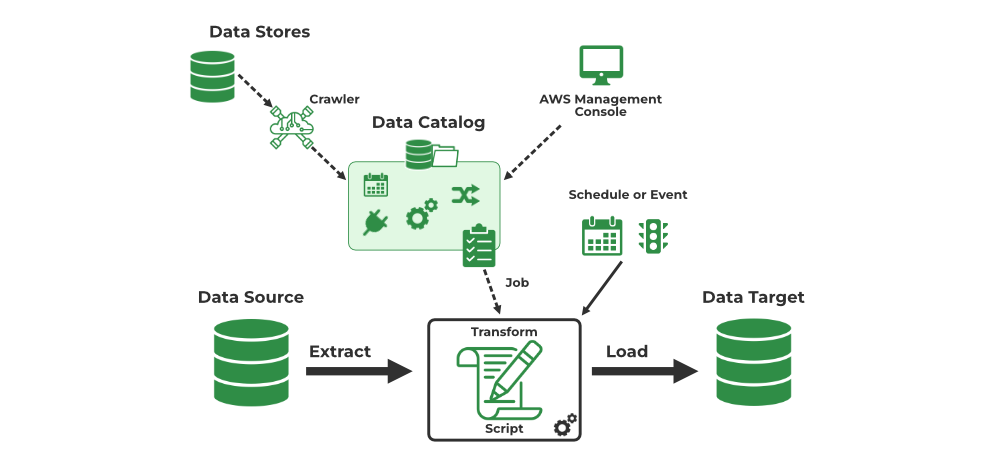
AWS Glue is a fully managed ETL (Extract, Transform, Load) service provided by Amazon Web Services. It helps you prepare and transform data for analytics by automating the process of data discovery, schema inference, and job scheduling. Here’s an overview of its main components and features:
Key Components of AWS Glue :
Data Catalog:
-
A central repository to store metadata about your data sources.
-
It automatically discovers and catalogs data across your data lake and data stores.
-
Supports schema versioning and integration with AWS Athena, Redshift Spectrum, and other AWS services.
Crawlers:
-
Automatically scan data sources, extract schema information, and populate the Data Catalog.
-
Can handle a variety of data formats, such as JSON, Parquet, CSV, and more.
ETL Jobs:
-
Scripts that extract data from your data sources, transform it according to your requirements, and load it into your data destination.
-
Jobs can be written in Python or Scala using Apache Spark.
-
Glue provides a visual ETL tool called AWS Glue Studio for creating, running, and monitoring ETL jobs without writing code.
Triggers:
-
Mechanisms to start Glue jobs based on schedules or events.
-
You can create workflows that chain multiple jobs and triggers together.
Workflows:
-
Allow you to manage and monitor a series of related jobs and crawlers.
-
Workflows can include conditional branching, retries, and parallel execution.
Use Cases
-
Data Lakes: Integrating, cleansing, and cataloging data from multiple sources in a data lake.
-
Data Warehousing: Transforming and loading data into data warehouses like Amazon Redshift.
-
Data Preparation for Analytics: Preparing data for analytics services like Amazon Athena or third-party tools.
Benefits
-
Serverless: No need to manage infrastructure; AWS Glue automatically provisions, configures, and scales the necessary resources.
-
Cost-Efficient: Pay only for the resources consumed by your ETL jobs.
-
Integration: Seamlessly integrates with other AWS services like S3, Redshift, RDS, Athena, and more.